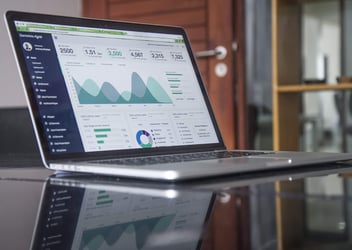I make my living writing and editing all manner of content. What follows is a harsh truth that I’ve had to accept: Organic discovery of content is all but dead. I wish it weren’t the case, but it is.
That’s not to say content isn’t valuable. It definitely is. It can still help potential buyers discover who you are. It can educate those buyers and build loyalty for your brand, maybe even before someone is ready to buy. And when that customer is ready to buy, content can be the thing that pushes them deeper into your funnel. Content is still the engine that makes inbound marketing go, it’s just that getting people to that content is more complicated than it used to be.
Businesses can no longer rely on a strategically placed keyword to get eyes on their blog posts or landing pages or website. There are too many people competing for the attention of the same relatively small groups and they are all using the same keywords. Your chances of being found organically are almost nil.
Just to reiterate, there’s still value in creating content. It can still do all those things it did before. The difference is that these days you have to pay to get it in front of your audience, and the world of digital advertising and paid exposure is a complicated one with multiple options that could all make sense depending on your audience and your goals. So, what’s what and when do you use it? We created this list of the types of digital advertising to help you out.
Social advertising
What is it? The official answer is that it’s advertising that relies on social information to facilitate targeting, allowing the advertiser to get its ads in front of a very specific audience. The simpler answer is that it’s social media advertising. You use the interests and data collected by Facebook, Twitter, and LinkedIn to build audiences then serve them ads driving them back to your content.
Privacy concerns and attempts by these networks to do some damage control means effective targeting has gotten more difficult. It’s tougher now to create very specific audiences, making this option a tough sell for B2B tech marketers with limited budgets that want their ads to generate leads. Most social targeting is broader, and that can make social advertising less effective.
When do you use it? In the B2B world, social ads aren’t necessarily great for lead generation. However, they are great for building awareness and driving people to your blog content, for example. You can then retarget those people who visited your site with other types of ads to bring them back. The budgets also vary – LinkedIn can get pretty pricey per click, whereas Facebook ads are still relatively inexpensive.
Retargeting
What is it? The Buyer’s Journey is not always as linear as we marketers like to think. Retargeting is exactly what it sounds like. You are taking someone who has been to your site, interacted with you on social media, opened one of your emails and then serving them advertisements. Sometimes these contacts might even already be leads. Typically, this is done through tracking pixels and cookies placed on a visitor’s computer, or by a list you provide. Platforms like Adroll, Facebook, and PerfectAudience are all good places to start. (Check out HubSpot’s Beginner’s Guide to Retargeting Ads for more information.)
When do you use it? Retargeting is most effective after you’ve already made a connection with someone. Either they’ve visited your site or interacted with you somewhere else. It takes multiple interactions with someone before they are ready to make a buying decision. Retargeting can help you make the repeat impressions you need to drive the contact through the Buyer’s Journey.
Programmatic
What is it? Programmatic is simply using software to buy advertising, typically banner and image ads. It’s the heart of the kinds of ads we are talking about. Without it, you’re stuck buying ads manually, and that’s much more difficult. It’s also much less efficient. There are a lot of menial tasks in the ad buying world that can be better handled by computers. You want humans planning your strategies. You want computers doing the ad buying.
When do you use it? For B2B technology marketing, when we are talking about digital advertising, most of the time we’re talking about programmatic. So much of online advertising is now programmatic advertising that you don’t really have a choice but to use it.
SEM/Paid search
What is it? While some will argue that search engine marketing includes traditional search engine optimization techniques, what most people mean when they talk about SEM is paid search. These are the links that sit on top of, bottom of, and side of the SERP page when you use a search engine.
When do you use it? If you have a very specific search term that you want to be found for, SEM can be effective. Keep in mind, though, that the more specific you get with your search terms the lower the search volume is. There just aren’t as many people trying to find that term (This is often the case for B2B marketing). That means the number of people seeing your ad is lower and the number of clicks you see will be fewer. That’s not a bad thing. It means that you are getting very specific traffic. It just may not be at the volume you were expecting.
It may be more difficult to justify the investment in broader search terms, especially if you’re a smaller company. As we’ve written before, your bigger competitors are able to outspend you to own these keywords,
PPC
What is it? Digital advertising is paid for in two ways. You either pay by the impression or you pay per click. PPC advertising is the most popular of the two options. Much of the advertising that we mention here could actually be categorized as PPC. Platforms like Google AdWords and Capterra are the most popular PPC options in the B2B space.
When do you use it? Clicks are more valuable than impressions because clicks are people taking an action. They are interacting with your ad and getting exposure to your content. If someone clicks your ad you know they saw it. If they were simply served your ad (That’s all it means to get an impression) there’s no actual guarantee someone saw it. But with a click, you know and you can then follow this site visitor around the internet with retargeting ads.
Digital advertising is now a necessary part of any inbound digital marketing strategy, but don’t let all the terminology confuse you. Once you understand where your potential buyers spend time online, you can determine which elements work best for your strategy. Hopefully, this glossary helps you navigate some of the jargon so that you can start talking about how you’re going to get your content in front of the perfect audience.

 6 min read
6 min read





 5 min read
5 min read

